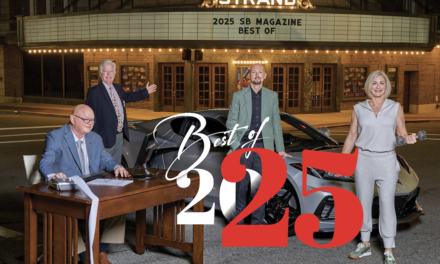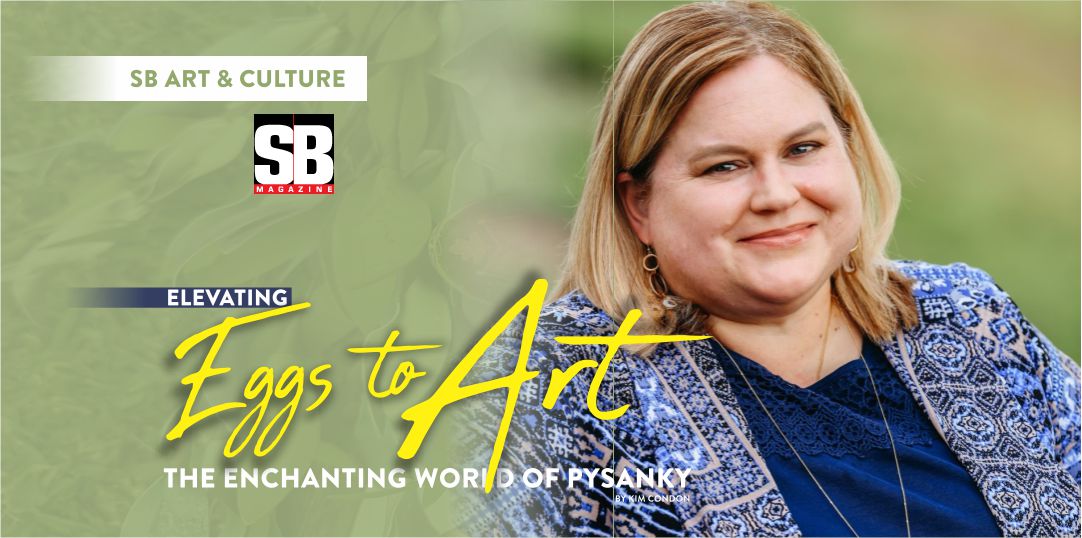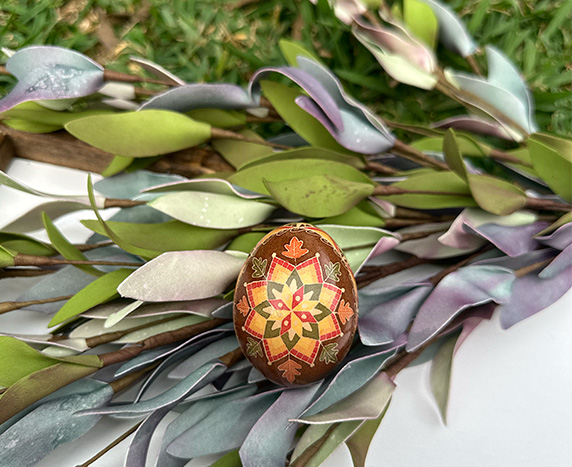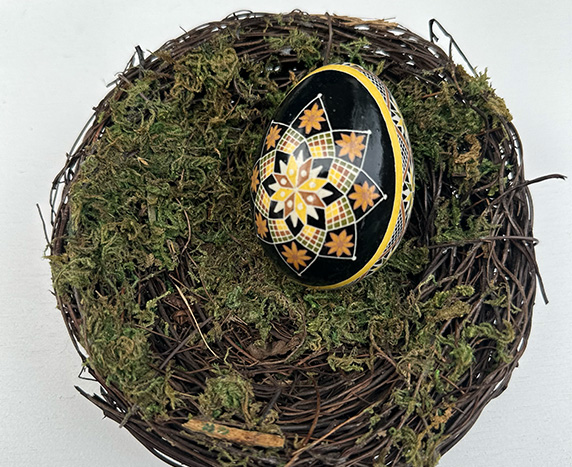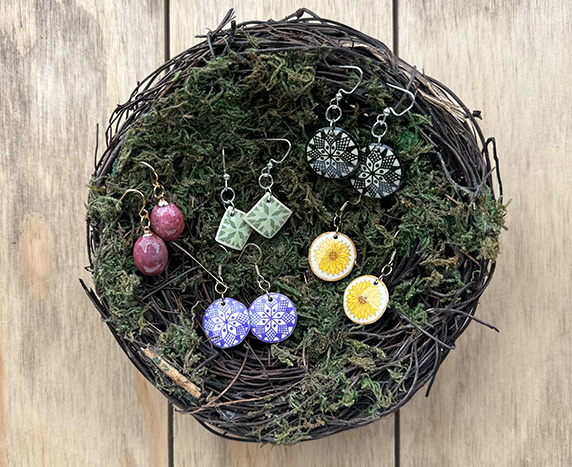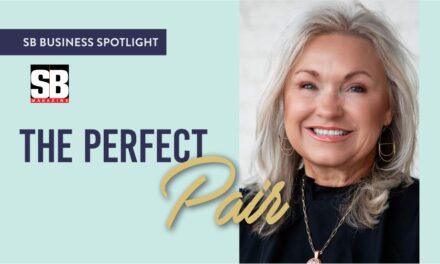By Kim Condon
Culinary arts cover a wide range of skills, from making food look pretty to telling a story with a dish. Think of a chef as an artist using ingredients as their tools. However, another artistic avenue finds its inspiration in one specific ingredient—the humble egg.
Pysanky, the traditional Ukrainian art of decorating eggs, is an enchanting form of expression that elevates the egg into a canvas for intricate designs and deep symbolism. The practice of pysanky dates back centuries, with roots embedded in Ukrainian culture.
The process of creating pysanky is meticulous, involving the use of beeswax and a specialized tool called a ‘kistka.’ The artist applies layers of wax to the eggshell, with each layer covering the parts that should retain the egg’s original color. Between each wax application, the egg is dipped in dyes, progressing from light to dark shades. After the final dye bath, the wax is melted to reveal the intricate design, and the egg becomes a masterpiece.
In the vibrant realm of pysanky artistry, our very own Bossier City resident, Shelley Masog, owner of The Pysanky Nest, shines as a pysanky artist known for her exceptional talent and unwavering dedication to preserving this age-old tradition. In 2022, her commitment earned her top honors at the Louisiana State Fair, where she claimed the first place and grand champion titles for her captivating Christmas ornaments. Shelley’s interest in the art of pysanky was sparked by her uncle in Minnesota, a seasoned pysanky artist of many years.
“The fact that it’s done on real eggshells is fascinating,” said Masog. “In 2011, he showed me how to create my first pysanka, and I have been writing Pysanky ever since.”
The term ‘pysanky’ comes from the Ukrainian word ‘pysaty,’ which means ‘to write.’ This is fitting, as Pysanky artists, in essence, write on their eggs with wax and dyes, imbuing them with intricate patterns, symbols, and personal messages.
“Historically, these eggs were often created around Easter, and the eggs incorporated Christian symbolism, such as crosses. The eggs were kept whole, but now many artists empty them,” explained Masog.
“Today, artists often create pysanky throughout the year using modern and traditional designs.”
Recently, Shelley has begun exploring the fusion of the traditional art form with jewelry making. To create jewelry, the decorated eggshell is delicately cut and shaped into the desired pieces, which can include pendants, earrings, or other adornments.
“The challenging part has been learning to cut the pieces from the eggshell without damaging the design so much that it cannot be used,” shared Masog.
Precision is crucial to avoid damaging the intricate design. To preserve the vivid colors and the fragility of the eggshell, the finished jewelry pieces are often sealed with a protective coating like resin. This enhances their longevity and adds a subtle sheen to the final product.
“I also fill tiny eggshells, such as finch and parakeet eggs, with resin to make jewelry.”
Shelley Masog’s unique combination of Pysanky and jewelry-making serves as a captivating bridge between tradition and innovation. When asked about the message or emotions she hopes to convey through her art, Shelley passionately expresses, “I love creating Pysanky and sharing this art with others. I enjoy learning about other cultures, so I hope others enjoy learning about this unique art form.”
By blending the ancient with the contemporary, Shelley’s creations offer a vibrant, living connection to a rich artistic tradition and contribute to the local artistic community. You can find Shelley’s Pysanky art by visiting her artist shop on Etsy, located at www.etsy.com/shop/PysankyNest.

